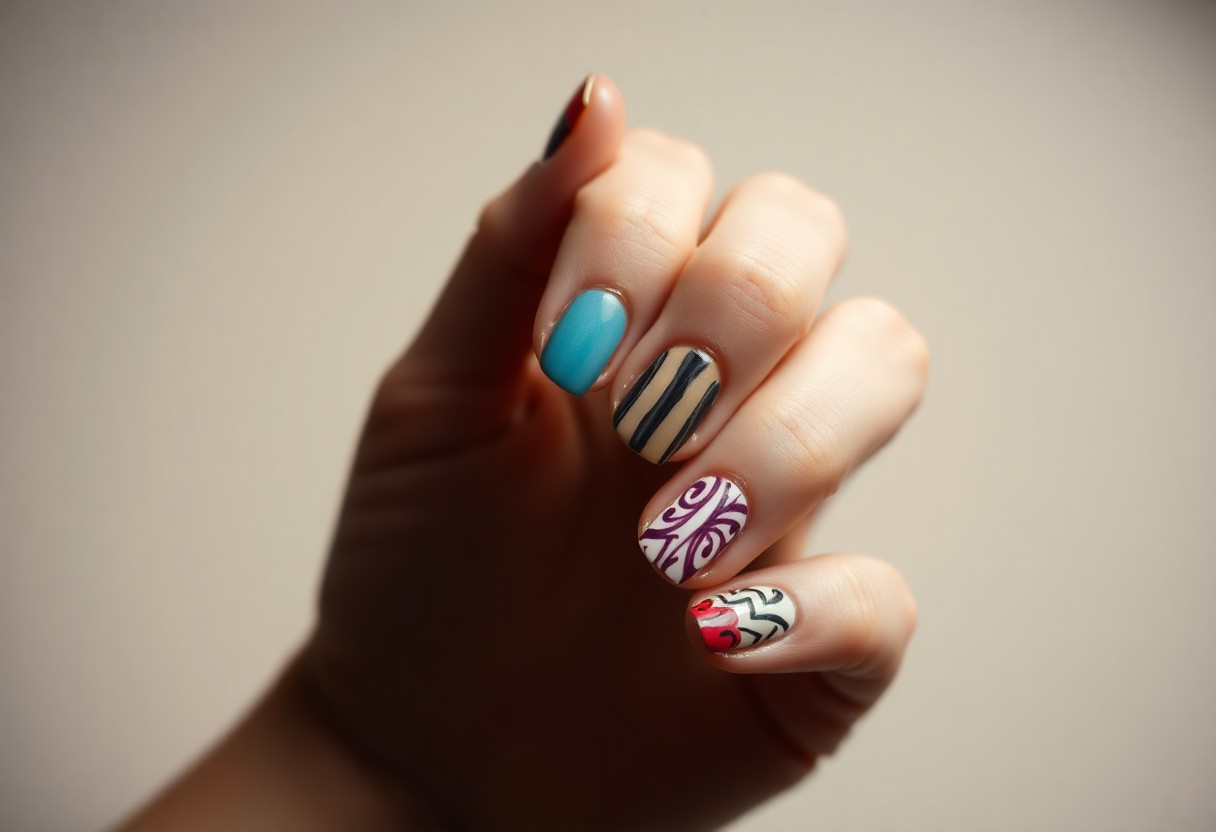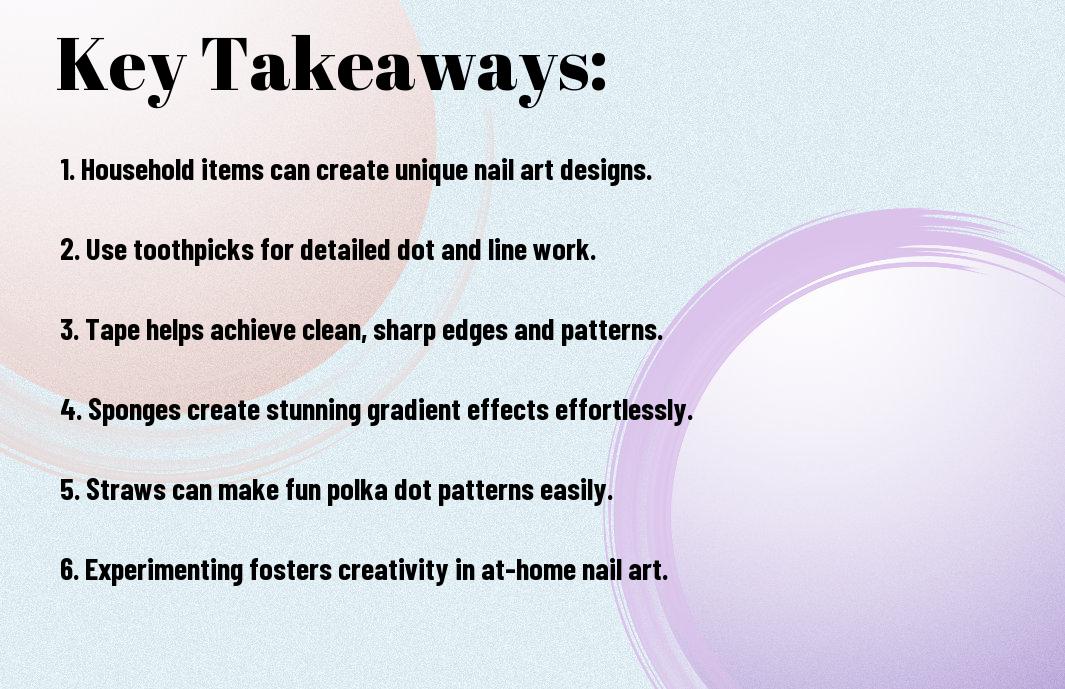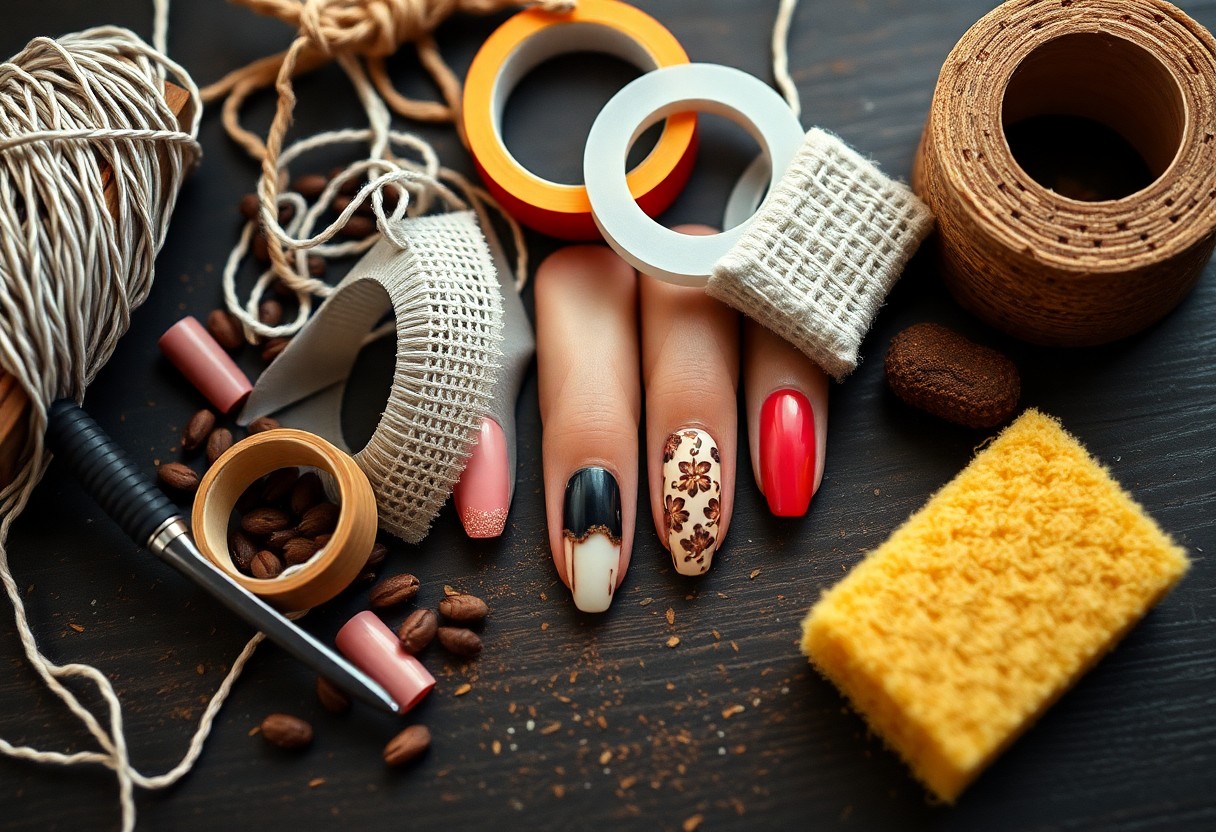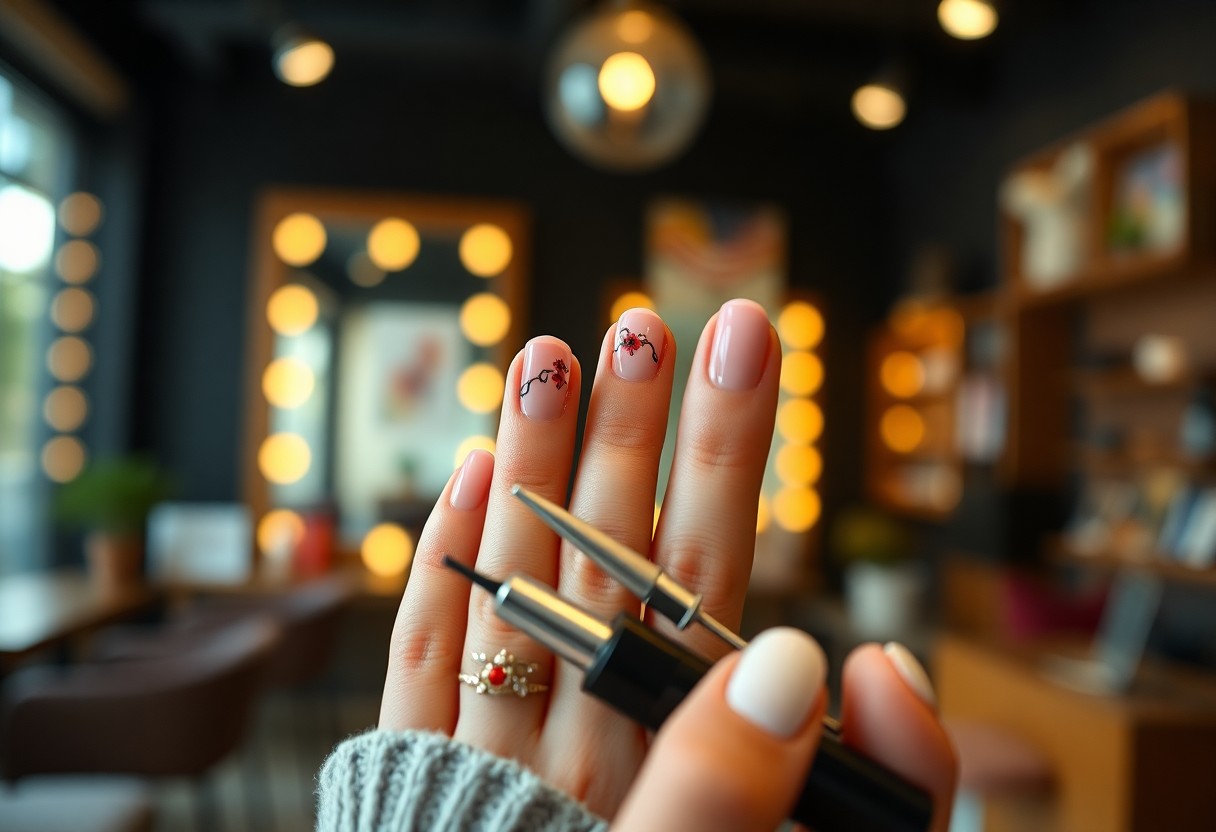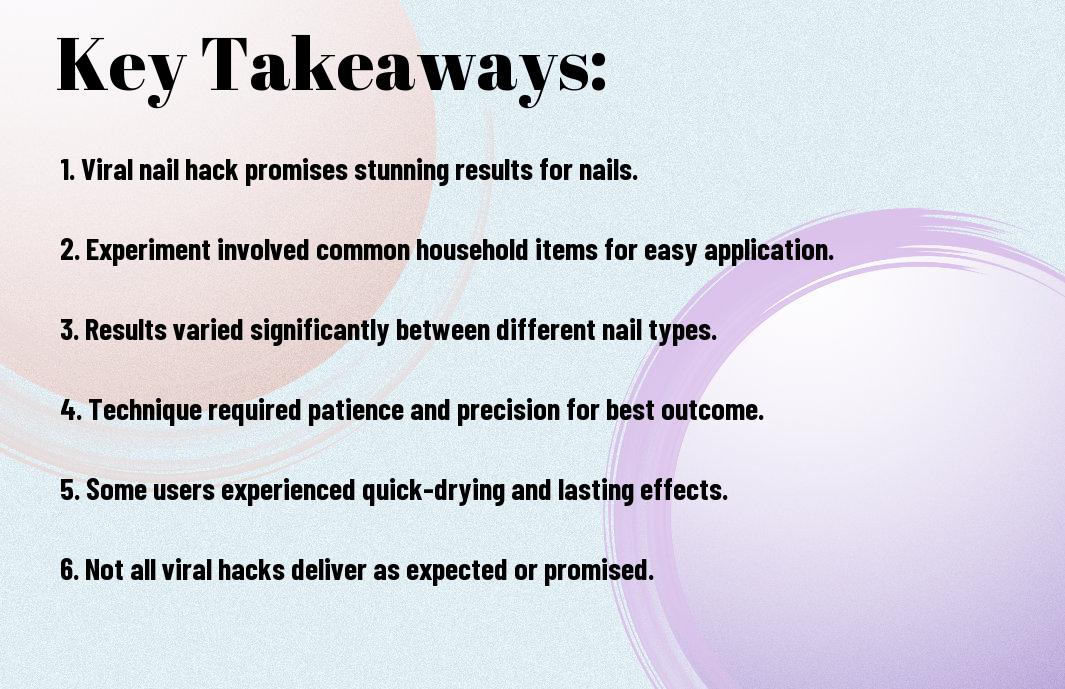It’s important to prioritize your health and hygiene when it comes to nail care. Using the right techniques and practices can significantly reduce your risk of infections from nail tools. In this post, you’ll learn how to properly clean and maintain your nail equipment, recognize signs of potential contamination, and what precautions to take when visiting nail salons. By following these guidelines, you can enjoy beautiful nails without compromising your well-being.
Key Takeaways:
- Proper Sanitization: Always disinfect nail tools before and after each use to prevent bacteria and fungi from accumulating.
- Personal Tools: Use your own nail tools instead of sharing them, which minimizes the risk of cross-contamination.
- Quality Products: Invest in high-quality nail tools made from stainless steel or other non-porous materials that are easier to clean and maintain.

Understanding Nail Tool Infections
A thorough understanding of nail tool infections is crucial for maintaining your nail health. These infections can occur when bacteria, fungi, or viruses enter the skin through cuts or abrasions caused by improperly cleaned or damaged tools. If you frequently visit nail salons or use home tools, awareness of how these infections develop can help you prevent them effectively.
Common Types of Infections
- Bacterial infections (e.g., Staphylococcus aureus)
- Fungal infections (e.g., toenail fungus or onychomycosis)
- Viral infections (e.g., warts or herpes simplex)
- Parasitic infections (e.g., scabies or other skin parasites)
- Infections due to ingrown nails
The health risks associated with these infections can vary in severity, affecting your nails and overall well-being.
Causes of Nail Tool Contamination
About the causes of nail tool contamination, several factors can lead to infections. Improper sanitation, sharing tools, and using damaged or worn-out equipment can increase the risk. Additionally, exposure to moist environments and neglecting your skin’s integrity can exacerbate the chance of infection.
Plus, using unsterilized tools, particularly in shared spaces like nail salons, creates an environment where harmful microorganisms can thrive. Regularly inspecting and properly maintaining your nail tools can significantly reduce the risk of contamination and subsequent infections.
Best Practices for Nail Tool Hygiene
Some important practices can significantly improve nail tool hygiene and protect against infections. Always prioritize cleanliness and ensure that the tools you use are adequately sanitized before and after each use. Regular maintenance not only keeps your tools in good shape but also reduces the risk of contamination, which is crucial for safe nail care.
Cleaning and Sanitizing Tools
Among the most effective ways to prevent infections is the proper cleaning and sanitizing of your nail tools. Use soap and water to wash your tools thoroughly, followed by a disinfectant solution specifically designed for beauty instruments to eliminate harmful bacteria and viruses.
Storage and Maintenance Tips
With proper storage and maintenance, you can extend the life of your nail tools and minimize the risk of infections. Always keep your tools in a clean, dry place, and consider using a dedicated container to protect them from dust and bacteria. Regularly check for any signs of wear, such as rust or deterioration.
- Store tools in a closed, hygienic container.
- Avoid sharing your tools with others.
- Inspect tools for damage before each use.
- Clean the storage container regularly.
- Any damaged or heavily worn tools should be replaced to ensure safety.
Storage should always be a priority to maintain the integrity of your nail tools. Invest in a specialized case or organizer that separates each tool to prevent cross-contamination. Ensure that the storage area is kept clean and dry to deter mold and bacterial growth. Additionally, avoid leaving tools out in the open where they may gather dust or come into contact with unclean surfaces.
- Keep tools organized to avoid accidents.
- Use protective covers for sharp instruments.
- Label your tools if sharing with others.
- Any signs of mold or rust should lead to immediate disposal and replacement of the affected tools.
Choosing the Right Nail Tools
Not all nail tools are created equal; selecting the right ones can significantly reduce your risk of infection. Ensure that the tools you choose are specifically designed for nail care and prioritize those that can be sanitized effectively. Look for reputable brands that emphasize hygiene in their product design, and always check for reviews to understand how other users value the tool’s effectiveness and safety.
Quality vs. Cost
The price of nail tools can be tempting to consider first, but opting for cheaper alternatives may not serve you well in the long run. High-quality tools are often made from materials that withstand regular sterilization without degrading. Investing in reliable tools pays off by reducing the risk of injury or infection, enhancing your overall nail care experience.
Recommended Materials
Before purchasing nail tools, it is crucial to focus on the materials from which they are made. Stainless steel, for instance, is a fantastic option as it is durable, easy to sanitize, and resistant to rust and corrosion. Additionally, certain plastics designed for nail care are also viable, but you must ensure they are labeled as disinfectable.
Recommended materials for nail tools include stainless steel, titanium, and high-quality plastics. Stainless steel is particularly preferred because it does not harbor bacteria and is easy to clean, making it safe for professional and at-home use alike. If you choose tools made from other materials, verify their cleaning capabilities to avoid any risk of infection. Investing in tools made from these recommended materials ensures longevity and safety, enabling you to maintain your nails without compromise.
Sterilization Techniques
Keep your nail tools safe by practicing effective sterilization techniques. Regularly disinfect your manicure and pedicure tools using EPA-approved disinfectants to eliminate harmful pathogens. Additionally, you can find valuable advice in these 8 Tips to Prevent Getting a Fungal Infection From Your … for maintaining hygiene standards both at home and in salons.
Methods for Home Use
Below are simple methods you can use at home to sterilize your nail tools. Soaking them in 70% isopropyl alcohol for 10 minutes is effective. For non-metal tools, consider using a soap solution followed by thorough rinsing and air drying. Consistent cleaning after each use ensures your tools remain free from infections.
Professional Sterilization Standards
Above all, understanding professional sterilization standards is vital for your safety. Salons must follow strict guidelines to ensure all reusable tools are sanitized and disinfected. Look for establishments that utilize autoclaves or sealed sterilization pouches, ensuring your nail care experience is not only enjoyable but also safe.
Understanding these professional sterilization standards helps you evaluate the safety practices of your nail salon. Ensure that technicians are trained to use proper sterilization equipment and techniques, which minimizes the risk of any infections. By being informed and vigilant about the sanitation practices in establishments you visit, you can greatly reduce your chances of encountering harmful microorganisms.
Signs of Infection to Watch For
Once again, staying vigilant is imperative for your health. If you notice any unusual changes around your nails such as redness, swelling, or increased tenderness, it could be a sign of infection. Pay attention to any discharge, especially if it’s pus-like, and be cautious of persistent pain that doesn’t subside. Early detection is key to preventing further complications.
Symptoms and Indicators
To effectively monitor for infection, be aware of the common symptoms and indicators. These can include warmth at the site, a change in color, or an unusual odor emanating from the affected area. Fever or chills may accompany more severe infections, signaling the need for prompt attention.
When to Seek Medical Attention
An urgent response is warranted if you develop signs of infection. If the symptoms continue to escalate, or if you experience severe pain, swelling, or fever, do not hesitate to consult a healthcare professional. A timely intervention can make a significant difference in recovery.
Indicators that you should seek medical attention include excessive redness or swelling that worsens, discharge that is increasing in volume, or if you have underlying health conditions that could complicate the infection. Acting promptly in such instances can lead to better treatment outcomes and minimize risks associated with nail tool infections.

Educating Yourself and Others
After learning about the risks associated with nail tools, you should focus on educating yourself and those around you. Understanding the importance of hygiene practices ensures that you can enjoy nail care without the fear of infections. Share your knowledge with friends and family, as awareness can significantly reduce the spread of harmful bacteria and fungi in your community.
Importance of Awareness
Among the many benefits of awareness is the ability to identify potential risks before they escalate. By understanding how infections can occur, you equip yourself with the knowledge to make informed decisions about nail care, allowing you to take proactive measures for prevention.
Sharing Best Practices
By discussing and promoting best practices, you foster a culture of health and safety regarding nail tool usage. This not only empowers you but also those in your circle to make smarter decisions.
A few best practices include always sanitizing tools before and after use, avoiding sharing personal nail tools, and opting for professional services that prioritize hygiene. Encourage others to follow these steps, as they create a healthier environment for everyone. Sharing experiences and tips within your community can further enhance the collective safety and ensure everyone is aware of the importance of maintaining clean nail care practices.
Conclusion
With these considerations, you can significantly minimize the risk of infections from nail tools. Always opt for sterilized or disposable implements and clean your tools regularly with disinfectants. Avoid sharing nail tools with others, and be cautious of salons that do not maintain high hygiene standards. Keep your nails clean and well-groomed, and monitor for any signs of infection. By prioritizing these practices, you protect your skin and health while enjoying beautiful nails.
FAQ
Q: Why is it important to clean nail tools before use?
A: Cleaning nail tools is vital to prevent the spread of bacteria and other pathogens that can cause infections. Tools can harbor germs from previous clients or even from the environment, and thorough sanitation helps ensure that you are using safe, hygienic instruments during your manicure or pedicure.
Q: What is the best way to disinfect nail tools?
A: The most effective way to disinfect nail tools is to use an EPA-registered disinfectant. First, wash the tools with soap and water to remove any debris. Then, immerse them in the disinfectant solution for the recommended time specified on the product’s label. Be sure to rinse and dry the tools after disinfection to eliminate any chemical residue.
Q: How often should nail tools be replaced?
A: Nail tools should be replaced regularly, especially those that show signs of wear or damage. Items such as files, buffers, and cuticle pushers generally have a shorter lifespan and may need replacement after a few uses. Stainless steel tools can last longer if maintained properly, but replacing them every few months can help minimize infection risks.
Q: Can I share nail tools with others?
A: Sharing nail tools is not recommended due to the risk of transmitting infections like fungal infections or warts. If you must share tools, ensure they are thoroughly cleaned and disinfected before and after each use. Ideally, each person should have their own set of nail tools to maintain personal hygiene and health.
Q: What signs should I look for to identify an infection from nail tools?
A: Signs of an infection can include redness, swelling, warmth, pain around the nail area, pus or drainage, and persistent discomfort. If you notice any of these symptoms after using nail tools, it is advisable to seek medical attention promptly to address the issue and prevent further complications.



